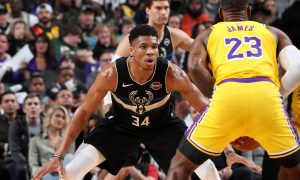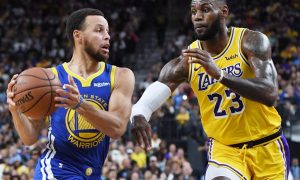 The preseason is winding down and dominoes have started to fall for the Sacramento Kings, a few much sooner than expected.
The preseason is winding down and dominoes have started to fall for the Sacramento Kings, a few much sooner than expected.
News broke last week that Carl Landry, who hadn’t appeared in the preseason due to injury, would miss three to four months after being diagnosed with a tear to his left hip flexor.
Landry was Sacramento’s biggest signing in free agency, coming over after a strong sixth man campaign at Golden State. His addition set the table for what was primed to be one of the most prominent storylines of the Kings’ preseason – the power forward battle between three skilled, evenly-matched players.
While at first glance Landry’s injury appears to have cooled down the depth chart competition that barely got a chance to heat up, it’s really only served to prolong it, setting the stage for an even more significant battle that will play out over the first half or so of the Kings’ season.
Before Landry went down, the competition at power forward figured to play out over the course of the seven-game preseason, with a winner being dubbed the starter and presumably with a backup also being selected, leaving one of Landry, Patrick Patterson or Jason Thompson the odd-man-out.
Because of the recent financial commitment to Landry, it’s safe to assume that he’d nab one of the former two spots; Sacramento wouldn’t shell out a $28 million, four-year commitment to a guy only to put him third on the depth chart at his position.
So really, the competition would come down to Thompson and Patterson. Who would prove themselves more worthy of garnering significant playing time at power forward for the Kings? It was a question that Sacramento surely would have made a priority to have answered by preseason’s end.
For the next three to four months, though, Michael Malone has two power forwards to work with, not three.
Ready for a little a lot of overtime?
For better or worse, the Kings will be forced to play out the position battle over next few months. Look for Thompson and Patterson, particularly at the season’s outset, to get near-equal playing time at power forward until one sufficiently makes his case to the coaching staff.
Malone’s biggest emphasis is on turning Sacramento’s horrid defense around (he was barely focused on Patterson’s 27-point night against Portland Sunday, instead praising his defense and rebounding), so that’s sure to play a large role in who separates themselves in his eyes, but how they fit in certain rotations may be a larger determining factor.
Patterson specializes in spreading the floor on offense and defending the pick and roll on defense. How that compliments DeMarcus Cousins’ strengths and flaws is sure to factor into Malone’s decision making when he sets starting lineups. Thompson is a better rebounder than Patterson and more effective in the paint; perhaps Malone finds that a better compliment with his star center. A lot will depend on how Malone plans to use Cousins on both ends and who he thinks compliments that gameplan best. Whoever doesn’t is likely to come off of the bench, so it may not even come down to who is the better one-to-one player of the two.
On court performance is the most obvious way this plays out, but outside factors may influence the outcome greatly as well, namely contracts.
Take a look at the Kings’ financial commitments to power forwards. Obviously they’ve gotten behind the idea of Landry being a rotation player for at least a few years. Where to go with the other two, though?
After this season, Sacramento is on the hook for about $19 million over three years with Thompson. On the other hand, Patterson is a restricted free agent come July.
Let’s say Patterson outperforms Thompson this season, earning the starting spot for much, or even all of it, once Landry returns. What will he command in restricted free agency then? Presumably, if he proves to be better than Thompson, he could be worth more than six to seven million dollars a year – what Thompson makes. The Kings would have to decide if they were willing to commit that much to Patterson with Landry and Thompson already on the payroll for years to come.
If they do, then what happens to Thompson? The Kings could have him back up Cousins, but Thompson, who’s mostly played power forward throughout his career, has had trouble against seven-foot centers. Would Sacramento really want to pay a backup center $19 million over the next three years, let alone one that may struggle in extended minutes against sizeable opponents? Probably not.
How about the alternative: maybe Thompson will outplay Patterson over the next three or four months and win the starting spot himself. While there’s the possibility with Thompson, Patterson cannot step into the backup center role. He’s not big enough to defend the centers and you probably don’t want your center on the perimeter as much as Patterson is offensively. The Kings likely wouldn’t re-sign him at whatever his price is to be their third power forward. He simply wouldn’t fit in. But would it be best to let Patterson, a player who has some value, just walk in free agency?
If you didn’t connect the dots before, you probably have by now. Both of these scenarios end with the best option being to trade the player that doesn’t win the starting spot in Landry’s absence.
It doesn’t really make sense to keep whoever loses the competition at the cost, financial or otherwise. The resources they’d command – playing time and salary – would be better allocated elsewhere throughout the roster.
Landry’s here to stay, his contract basically assures that, but someone’s got to go. Even though he’s out, there’s no stopping the position battle, a battle for the front office’s affection that will be waged over the course of the next few months.
Landry is scheduled to make his return, coincidentally, around the trade deadline – just in time for the Kings to make an early decision on the future and get ahead of whatever dominoes may fall.


















